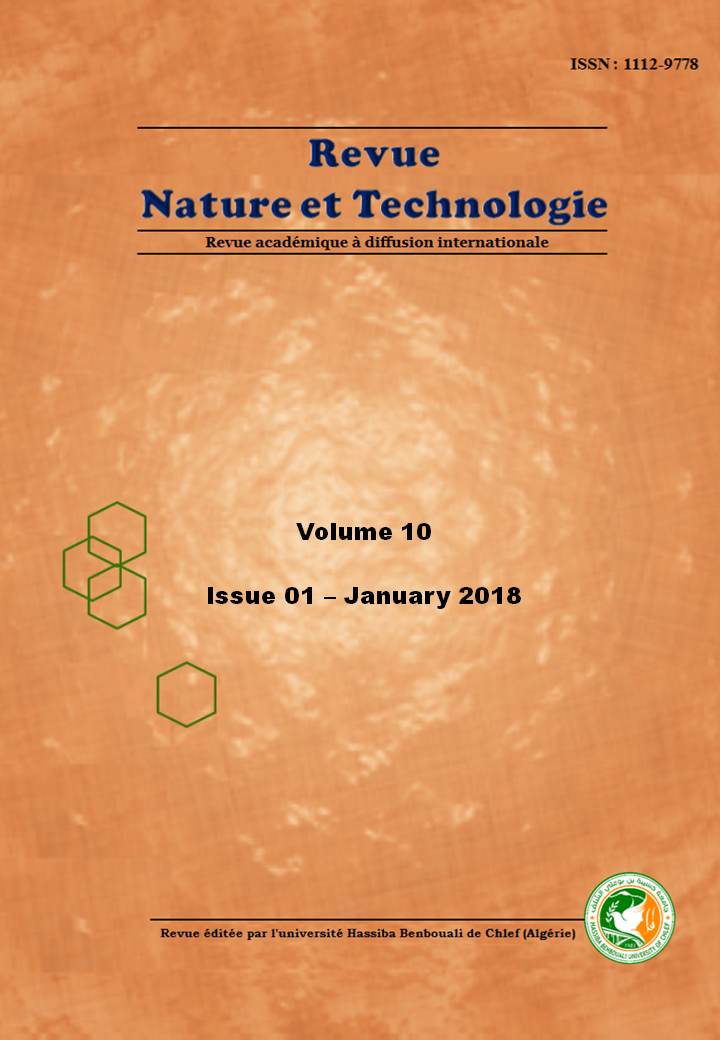Effect of the sites on the phenology of Prunus avium in Tunisia
Keywords:
Prunus avium, Northwest of Tunisia, Sites, PhenologyAbstract
The phenology of wild cherry in the Northwest of Tunisia was studied over the year 2013. The phenological events reserved are the
leafing, the flowering and the fruiting. The observation of the various phenological phases of this species (bud burst, blossoming or
fruiting) reveals a variation inter-site and intra-site. The precocity reveals for the sites of Tabarka (Hamdia and Kroufa) can give some
explanation of differences of edaphic and topographic characteristics. The analyses of variances show that the duration of the various phenological phases of the wild cherry is significantly connected with the geographical localization of sites. The differences observed within the same site can give some explanation by the genetic variability of trees. These results open perspectives for the valuation and the genetic preservation of this commercial species in the northeast of Tunisia.
References
Franc A., Borchert C., Marzolf G., Les exigences stationnelles du merisier : « revue bibliographique », Revue Forestière Française XLIV. (1996) 27-31
Jdaidi N., "Le merisier (Prunus avium L.) en Kroumirie (Nord-Ouest de la Tunisie) : caractérisation écologique, multiplication et valorisation", Thèse de doctorat en Génie Rural, Eaux et Forêts, Institut National Agronomique de Tunis. (2016) 178 pages.
Jdaidi N., Zouwawi I., Hasnaoui F., Boussaidi N., Abbès C., Alvarez E.T., Hasnaoui B., Influence des variables climatiques sur la largeur des cernes de Merisier (Prunus avium) en Tunisie, Rev. Écol. (Terre Vie), 67 (2014) 10 pages
Kramer K., Limonene I., Loustau D., The importance of phenology for the evaluation of impact of climate change on growth of boreal, temperate and Mediterranean forests ecosystems: an overview. International Journal of Biometeorology, 44 (2000) 67-75.
Laurens D., Loquai C., Monsarrat A., Le drageonnage des espèces ligneuses tempérées et tropicales : axes de réflexion pour la mise en place d’une étude sur le drageonnage en zone sahélienne. Étude bibliographique, Angers ; Montpellier : Institut national d’horticulture (INH) d’Angers et Cirad-Forêt, 2000.
Lavarenne-Allary S., Recherches sur la croissance des bourgeons de chêne et de quelques autres espèces ligneuses, Annales des Sciences Forestières, 22 (1965) 1-203.
Lebourgois F., Pierrat J. C., Perez V., Piedallu C., Ulrich E., Déterminisme de la phénologie des forêts tempérées françaises, Étude sur les peuplements du RENECOFOR, Revue Forestière Française, 60 (3) (1996) 323-343.
Robbe V., "Les utilisations non bois des feuillus précieux dans les territoires et exploitations agricoles à travers trois exemples : le frêne, le merisier, l’alisier torminal ", Master Écologie-UMR Dynafor- INRA de Toulouse, 35 pages, 2005.
Rotzer T., Chmielewski F. M., Phenological maps of Europe, Climate Research, 18 (2001) 249-257.
Sparks T. H., Carey P. D., Combes J., First leafing dates of trees in Surrey between 1947 and 1996, The London Naturalist, 76 (1997) 15-20.

Downloads
Published
How to Cite
Issue
Section
License
Copyright (c) 2018 Nature & Technology Journal

This work is licensed under a Creative Commons Attribution 4.0 International License.
- All publications of "Nature & Technology Journal" are available under CC-BY Creative Commons Attribution 4.0 International which allows sharing, copying, reproduction, distribution, communication, reuse, adaptation by all means, in all formats and under all licenses.
- Any exploitation of the work or derivative works, including for commercial purposes, is possible. The only obligation is to credit the creators of the authorship of the original works, to indicate the sources and to indicate if modifications were made to the works (obligation of attribution).
This License gives:
- Nature & Technology Journal the right to develop, promote, distribute and archive the article set cited above (including, without limitation, the right to publish the work in whole or in part in any form whatsoever) and ensure the widest dissemination.
- The author (s) reserves the right to use all or part of this article, including tables and figures of his own works, providing that the appropriate recognition is given to the publisher as the holder of the copyrights, and the right to make copies of this article for its own use, but not for sale.




